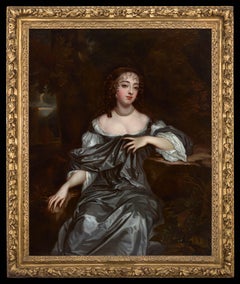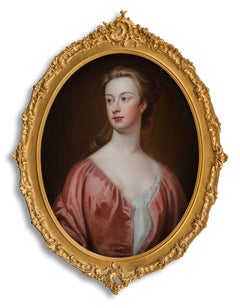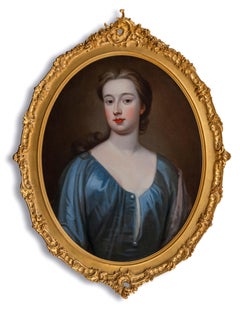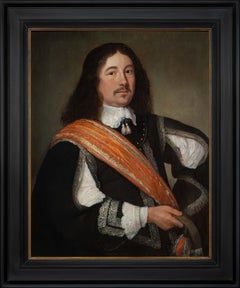More Art
17th Century Old Masters More Art
Canvas, Oil
18th Century Old Masters More Art
Canvas, Oil
17th Century Old Masters More Art
Canvas, Oil
18th Century Old Masters More Art
Canvas, Oil
18th Century Old Masters More Art
Canvas, Oil
17th Century Old Masters More Art
Oil, Wood Panel
20th Century Surrealist More Art
Lithograph
21st Century and Contemporary Surrealist More Art
Canvas, Acrylic
1970s Surrealist More Art
Paper
18th Century Old Masters More Art
Oil, Canvas
1960s Surrealist More Art
Gold, Bronze
1960s Surrealist More Art
Gold, Bronze
18th Century Old Masters More Art
Canvas, Oil
17th Century Old Masters More Art
Oil, Wood Panel
17th Century Old Masters More Art
Oil, Wood Panel
21st Century and Contemporary Surrealist More Art
Paper, Ink, Mixed Media, Watercolor
Artist Comments
A slow-moving sea turtle swims with determination, balancing a cupcake on its head. It evokes feelings of solitude, peace, and joy. The artwork, painted over a ...
21st Century and Contemporary Surrealist More Art
Oil
Artist Comments
Painted in a realist tradition, a hotdog in a bun takes center stage in this modern still life. Artist Dwight Smith enjoys exaggerating the scale of objects t...
21st Century and Contemporary Surrealist More Art
Watercolor
Artist Comments
The artwork depicts the Nine of Pentacles card, symbolizing rapidly growing success, incoming financial satisfaction, and wealth. White bison figures represen...
21st Century and Contemporary Surrealist More Art
Oil
Artist Comments
The artwork portrays the Ten of Pentacles card, symbolizing success, financial satisfaction, and the completion of a wealth cycle. White bison figures, repres...
21st Century and Contemporary Surrealist More Art
Oil
Early 2000s Surrealist More Art
Glass
Early 2000s Surrealist More Art
Copper
2010s Surrealist More Art
Mixed Media
17th Century Old Masters More Art
Canvas, Oil
21st Century and Contemporary Surrealist More Art
Paper, Ink, Mixed Media, Watercolor
21st Century and Contemporary Surrealist More Art
Paper, Ink, Mixed Media, Watercolor
21st Century and Contemporary Surrealist More Art
Paper, Ink, Mixed Media, Watercolor
21st Century and Contemporary Surrealist More Art
Canvas, Oil
21st Century and Contemporary Surrealist More Art
Canvas, Oil
21st Century and Contemporary Surrealist More Art
Canvas, Oil
21st Century and Contemporary Surrealist More Art
Canvas, Oil
21st Century and Contemporary Surrealist More Art
Canvas, Oil
21st Century and Contemporary Surrealist More Art
Canvas, Oil
21st Century and Contemporary Surrealist More Art
Canvas, Acrylic
21st Century and Contemporary Surrealist More Art
Canvas, Acrylic
2010s Surrealist More Art
Canvas, Acrylic
Mid-19th Century Old Masters More Art
Oil
17th Century Old Masters More Art
Oil, Wood Panel
17th Century Old Masters More Art
Oil, Wood Panel
18th Century Old Masters More Art
Canvas, Oil
17th Century Old Masters More Art
Canvas, Oil
17th Century Old Masters More Art
Canvas, Oil
1830s Old Masters More Art
Oil, Board
Artist Comments
Dwelling in a space of absolute simplicity, free from endless mental chatter, seems quite appealing. A tiny robot with a die is captivated by what exists before...
21st Century and Contemporary Surrealist More Art
Oil
Artist Comments
Inspired by the Eight of Pentacles tarot card, the vibrant green hues of the artwork symbolize growth, fertility, and abundance, including aspects related to mo...
21st Century and Contemporary Surrealist More Art
Oil
Artist Comments
As part of artist Rachel Srinivasan's Rodeo Tarot series, this interpretation of the Seven of Pentacles tarot card uses green to embody the themes of growth, fe...
21st Century and Contemporary Surrealist More Art
Oil
18th Century Old Masters More Art
Canvas, Oil
1970s Surrealist More Art
Paper, Ink, Mixed Media, Lithograph, Offset, Felt Pen
17th Century Old Masters More Art
Canvas, Oil
2010s Surrealist More Art
Canvas, Acrylic
Artist Comments
A group of friends sail in a small ship that wallows atop rolling seas. Some engage in various activities to keep their spirits high while the lookouts have an ...
21st Century and Contemporary Surrealist More Art
Oil
Artist Comments
An old-timey frog couple stands together, but they seem to be miles apart. The artwork delves into the profound exploration of human connections, revealing how ...
21st Century and Contemporary Surrealist More Art
Oil
Artist Comments
Drawing inspiration from her move from the Midwest to Florida, artist Kat Ailver paints a whimsical blend of seahorses and bunnies. The different shades of peac...
21st Century and Contemporary Surrealist More Art
Oil
17th Century Old Masters More Art
Canvas, Oil
Artist Comments
The painting reinterprets the Six of Pentacles tarot card, delving into the concept of gaining material wealth and enjoying one's work. The green hues symboli...
21st Century and Contemporary Surrealist More Art
Oil
Artist Comments
As a part of artist Rachel Srinivasan's Rodeo Series, the painting explores the symbolism of the five pentacles tarot card. The prominent green hues carry meanings of wealth, abundance, growth, and a connection to nature. The white bison adds a layer of mysticism, representing the power of the supernatural. Galloping horses adorn the edges, adding an intriguing touch to the composition.
About the Artist
For Rachel Srinivasan, an idea is worth putting on a canvas only if it still feels exciting after a few days. Rachel enjoys mulling the idea over in her mind for some time before creating an artwork. She hopes viewers will engage with her work and wonder about the subject matter, shapes and colors. "My current work is all about creating a connection between the person on the canvas with the viewer," she explains. She prefers large paintings and sometimes even makes her own canvases. She currently lives in Arizona and enjoys baking rhubarb pies, reading, running and going to art museums.
Words that describe this painting: tarot, wealth, abundance, magic, mystical, cards, oracle, white bison, buffalo...
21st Century and Contemporary Surrealist More Art
Oil
Artist Comments
A mesmerizing underwater scene comes to life where an enchanting mix of sea creatures, humans, and scuba bunnies coexist in perfect harmony. The submerged world...
21st Century and Contemporary Surrealist More Art
Oil
Artist Comments
Inspired by her relocation from the Midwest to Florida, artist Kit Silver paints a whimsical fusion of seahorses and bunnies. The warm hues and intricate detail...
21st Century and Contemporary Surrealist More Art
Oil





